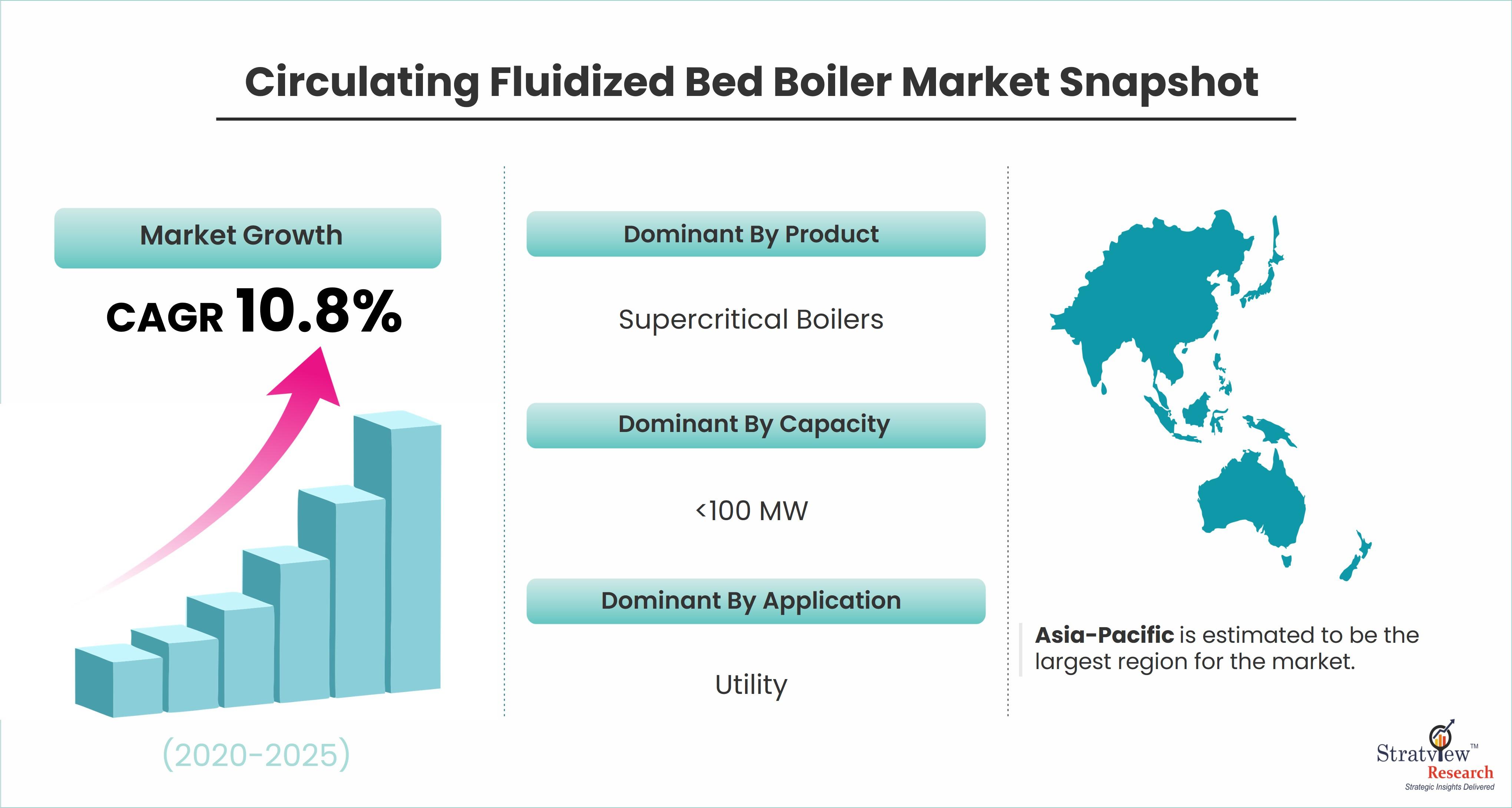According to Stratview Research, the circulating fluidized bed boiler market is likely to witness an impressive CAGR of 10.8% during the forecast period of 2020-2025.
In the realm of energy production, the Circulating Fluidized Bed (CFB) boiler market stands out as a dynamic and evolving sector. Fueled by a constant drive for efficiency, sustainability, and innovation, this market plays a crucial role in meeting the world's growing energy needs. In this article, we delve into the intricate dynamics of the Circulating Fluidized Bed Boiler Market, exploring the factors driving its momentum and shaping its trajectory.
Growing Energy Demand: One of the primary drivers of the CFB boiler market's dynamics is the ever-increasing global demand for energy. As populations grow, economies expand, and industrial activities intensify, the need for reliable and efficient power generation solutions becomes paramount. CFB boilers, with their ability to burn a wide range of fuels and produce high-pressure steam, offer a versatile and effective means of meeting this escalating demand while minimizing environmental impact.
Environmental Regulations and Sustainability Goals: In recent years, stringent environmental regulations and sustainability goals have propelled the adoption of CFB technology. With its inherent ability to reduce emissions of pollutants such as sulfur dioxide, nitrogen oxides, and particulate matter, CFB boilers are favored by policymakers and environmental agencies seeking to mitigate the impact of fossil fuel combustion on air quality and climate change. Furthermore, the versatility of CFB boilers extends to their ability to utilize renewable biomass and waste fuels, aligning with the global shift towards cleaner and more sustainable energy sources.
Technological Advancements and Efficiency Gains: The dynamic nature of the CFB boiler market is further fueled by continuous technological advancements aimed at enhancing efficiency and performance. Manufacturers are investing in research and development to optimize boiler designs, improve combustion efficiency, and reduce operating costs. Advanced control systems, fluidized bed technology, and integrated emissions control measures are among the innovations driving efficiency gains in CFB boilers. Furthermore, the integration of digitalization and smart technologies enables real-time monitoring, predictive maintenance, and remote operation, further maximizing operational efficiency and reliability.
Market Competition and Innovation: Competition within the CFB boiler market spurs innovation and drives market dynamics. Leading manufacturers are engaged in a constant quest to differentiate their offerings through technological innovation, product diversification, and value-added services. This competitive landscape fosters collaboration and strategic partnerships across the industry ecosystem, driving synergies and accelerating the pace of innovation. Moreover, market dynamics are influenced by factors such as regulatory changes, economic conditions, and shifting energy market trends, necessitating agility and adaptability among market players.
Conclusion: The Circulating Fluidized Bed boiler market is characterized by dynamic forces that shape its evolution and drive its momentum. From the growing demand for energy to the imperative of environmental sustainability, from technological innovation to market competition, a myriad of factors converge to propel the CFB boiler market forward. As the quest for clean, efficient, and sustainable energy solutions intensifies, the dynamics of the CFB boiler market will continue to unfold, shaping the future of power generation and driving progress towards a more sustainable energy landscape.
